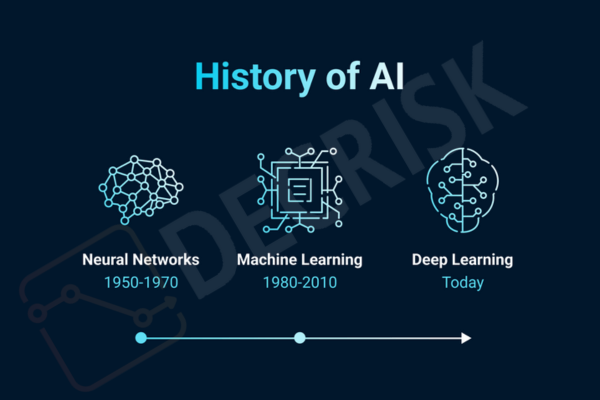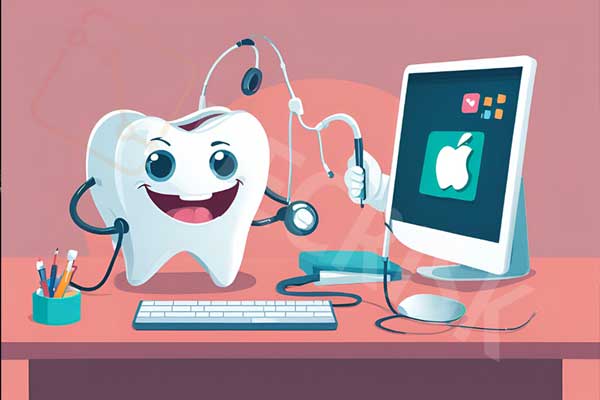Artificial Intelligence (AI) might seem like a buzzword of the 21st century, but its roots go back decades. The concept of machines that can think traces back to the mid-20th century when Alan Turing, a pioneering British mathematician, laid the groundwork for AI in his 1950 paper, “Computing Machinery and Intelligence.” Turing envisioned a future where machines could “think” in ways similar to humans, a radical idea at the time.

Turing’s exploration of “thinking machines” wasn’t just theoretical. He proposed a method to measure a machine’s intelligence, now famously known as the Turing Test. Imagine a scenario where a human judge engages in a text-based conversation with both a human and a machine, without knowing which is which. If the judge can’t reliably distinguish between the two, the machine is said to have passed the Turing Test, demonstrating what we now call “machine intelligence.”
Fast forward to 1955, and the term “Artificial Intelligence” was officially coined during the Dartmouth Summer Research Project. This groundbreaking workshop, led by notable figures like John McCarthy and Marvin Minsky, brought AI into the academic spotlight. However, despite the excitement, AI’s early progress was hampered by technological limitations—computers of the time lacked the ability to store code, and high costs further slowed development.
The late 1950s through the mid-1970s marked a period of rapid AI growth, driven by advances in computing power and accessibility. One early success was ELIZA, a program that could mimic human conversation and solve problems through text. However, the momentum didn’t last. Two periods known as the “AI Winters” in the mid-1970s and late 1980s saw reduced funding and interest due to the lack of practical applications.
Yet, AI wasn’t entirely dormant during these winters. The 1980s witnessed the rise of two significant branches: machine learning (ML) and expert systems. Machine learning focused on enabling computers to learn from experience, while expert systems aimed to replicate the decision-making processes of human experts. These expert systems found practical applications, particularly in industries like computing, where programs like R1 (Xcon) assisted in component selection for computer assembly.
The next big leap in AI came in 2012 with a deep learning network implemented on graphics processing units (GPUs). This innovation won the ImageNet Large Scale Visual Recognition Challenge with a groundbreaking error rate, significantly surpassing its competitors. Just five years later, in 2017, another milestone was reached when SE-NET reduced the error rate further, even outperforming human capabilities in image classification.
AI’s prowess in strategic thinking was also demonstrated in games. IBM’s Deep Blue defeated world chess champion Garry Kasparov in 1997, and in 2017, Google’s AlphaGo made headlines by beating the world’s top Go player, Ke Jie. These victories highlighted AI’s ability to master complex tasks that were once thought to be uniquely human.
And then came ChatGPT. Launched by OpenAI in late 2022, ChatGPT represents the latest leap forward in AI technology. This text-generation model can produce human-like responses, sparking widespread discussion about AI’s potential—and its implications. From “thinking machines” to conversational agents that can mimic human dialogue, the journey of AI has been nothing short of extraordinary. As we look to the future, it’s clear that AI will continue to evolve, shaping the way we live, work, and interact with technology.
Also Artificial Intelligence (AI) is revolutionizing healthcare, particularly in the field of dentistry. AI-powered tools are enhancing diagnostics by analyzing patient data and medical images with unprecedented precision. In dental health, AI can detect cavities, gum disease, and other oral issues at early stages, often before they become visible to the naked eye. This enables dental professionals to develop more accurate treatment plans, improving patient outcomes and reducing the need for invasive procedures. AI-driven imaging and diagnostics are not only increasing the accuracy of dental care but also making it faster and more efficient.
Beyond diagnostics, AI is transforming patient management and clinic operations. AI-powered chatbots can streamline appointment scheduling, answer common patient queries, and send reminders for follow-up visits, improving patient engagement and clinic workflow. Additionally, AI has the potential to assist in dental surgeries with robotic systems that perform minimally invasive procedures, enhancing precision and reducing recovery times. As AI continues to advance, it holds the promise of more personalized dental care, allowing professionals to focus on higher-level tasks while improving the overall patient experience.


